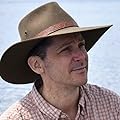
Obtén tu audiolibro gratis
Los Más Vendidos
-
-
I Told You So!
- Scientists Who Were Ridiculed, Exiled, and Imprisoned for Being Right
- De: Matt Kaplan
- Narrado por: Sean Pratt
- Duración: 9 h y 17 m
- Versión completa
-
General0
-
Narración:0
-
Historia0
An energetic and impassioned work of popular science about scientists who have had to fight for their revolutionary ideas to be accepted—from Darwin to Pasteur to modern day Nobel Prize winners. For two decades, Matt Kaplan has covered science for the Economist. He’s seen breakthroughs often...
-
I Told You So!
- Scientists Who Were Ridiculed, Exiled, and Imprisoned for Being Right
- Narrado por: Sean Pratt
- Duración: 9 h y 17 m
- Fecha de lanzamiento: 24-02-26
- Idioma: Inglés
No se pudo agregar al carrito
Solo puedes tener X títulos en el carrito para realizar el pago.Add to Cart failed.
Por favor prueba de nuevo más tardeError al Agregar a Lista de Deseos.
Por favor prueba de nuevo más tardeError al eliminar de la lista de deseos.
Por favor prueba de nuevo más tardeError al añadir a tu biblioteca
Por favor intenta de nuevoError al seguir el podcast
Intenta nuevamenteError al dejar de seguir el podcast
Intenta nuevamente$20.24 o gratis con una prueba de 30 días
-
-
-
Science of the Magical
- From the Holy Grail to Love Potions to Superpowers
- De: Matt Kaplan
- Narrado por: Eric Michael Summerer
- Duración: 7 h y 26 m
- Versión completa
-
General20
-
Narración:18
-
Historia17
Can migrations of birds foretell our future? Do phases of the moon hold sway over our lives? Are there sacred springs that cure the ill? Listen to find out....
-
-
The End of Magic?
- De Diane en 14-07-17
-
Science of the Magical
- From the Holy Grail to Love Potions to Superpowers
- Narrado por: Eric Michael Summerer
- Duración: 7 h y 26 m
- Fecha de lanzamiento: 10-11-15
- Idioma: Inglés
No se pudo agregar al carrito
Solo puedes tener X títulos en el carrito para realizar el pago.Add to Cart failed.
Por favor prueba de nuevo más tardeError al Agregar a Lista de Deseos.
Por favor prueba de nuevo más tardeError al eliminar de la lista de deseos.
Por favor prueba de nuevo más tardeError al añadir a tu biblioteca
Por favor intenta de nuevoError al seguir el podcast
Intenta nuevamenteError al dejar de seguir el podcast
Intenta nuevamente$18.18 o gratis con una prueba de 30 días
-
Listeners also enjoy
¿Eres un autor?
Ayúdanos a mejorar nuestras Páginas de Autores actualizando tu bibliografía e ingresando una imagen nueva o actual junto con una biografía.Visita Amazon Author Central











